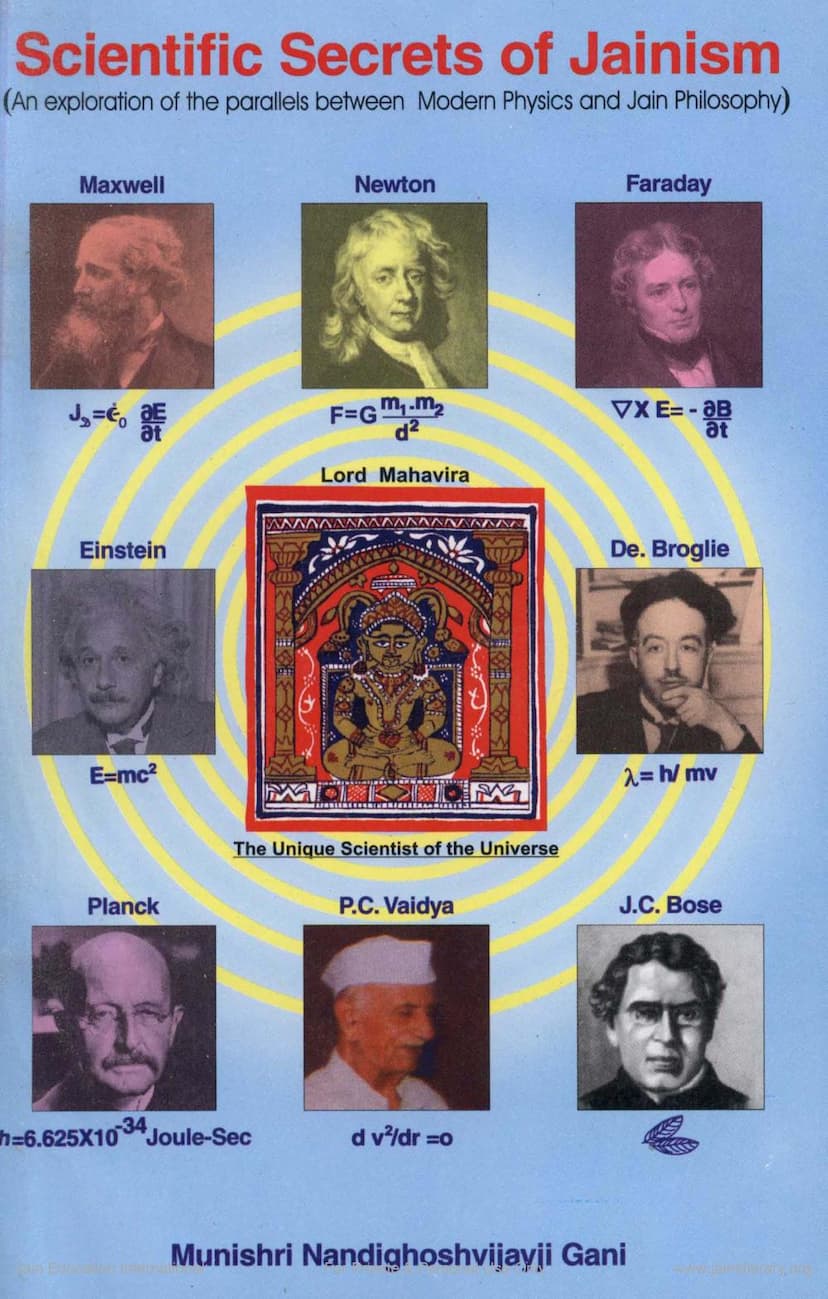Scientific Secrets Of Jainism
Added to library: September 2, 2025

Summary
This book, "Scientific Secrets of Jainism: An Exploration of the Paralles Between Modern Physics and Jain Philosophy" by Munishri Nandighoshvijayji, endeavors to bridge the perceived gap between the ancient Jain philosophical tradition and contemporary scientific understanding, particularly in the realm of modern physics. The author, a Jain monk, meticulously examines various scientific theories and concepts, seeking to find parallels and resonances within Jain scriptures.
The book highlights several key areas where Jain teachings appear to align with or anticipate modern scientific discoveries. These include:
- The Nature of Reality and the Universe: Jain philosophy posits that the universe is governed by fundamental laws rather than a creator God, a concept that resonates with the scientific view of a universe governed by natural laws. The Jain concept of Anekantavada (multiplicity of viewpoints or relative truth) is presented as a framework that can accommodate the dual nature of phenomena like light, which exhibits both wave and particle characteristics, a dichotomy that challenged classical Western science.
- Physics and Cosmology: The book delves into topics such as the Special Theory of Relativity (E=mc², the constancy of the speed of light, and the effects of velocity on mass and length), the nature of light (as both waves and particles, the concept of photons), Doppler's Effect, and Black Holes. The author explores Jain cosmological descriptions, including the structure of the universe, the divisions of space (Loka and Aloka), and concepts of time and matter, suggesting that Jain scriptures contain remarkably accurate, albeit ancient, insights.
- Mathematics: The text examines mathematical concepts like the value of Pi (π), finding ancient Indian and Jain approximations that are surprisingly accurate, and touches upon the development of numbers, including the concept of zero, which originated in India. It also discusses the Jain numerical system, which includes incredibly large numbers and concepts related to infinity.
- Biology and Life: Jainism's classification of living beings, including life in elements like earth, water, fire, and air, is discussed. The book explores the scientific basis of Jain dietary practices, such as the prohibition of certain vegetables on specific days, linking it to the understanding of subtle properties of food and their psychic and physical effects. The concept of extrasensory perception (ESP) is also explored, drawing parallels with Jain concepts of subtle bodies and yogic powers.
- Human Physiology and Health: The book references Jain scriptures for descriptions of human physiology, including bone structures (Sanghayanas), the development of the human embryo, and the seven musical notes and their perceived physiological effects. It also touches upon the scientific importance of celibacy (Brahmacharya), fasting, and penance (Tapas), suggesting that these practices have physiological and psychological benefits supported by modern science.
- Mantra, Yantra, and Sound: The author analyzes the scientific basis of mantras, yantras (mystical diagrams), and sound, suggesting that these ancient practices are rooted in the understanding of vibrations, frequencies, and the material nature of sound (Bhāṣā Vargaṇā), aligning with the Jain view of sound as a manifestation of matter.
- Time and Cycles: The Jain concept of time cycles (Kalpachakra), including Utsarpinikāla (ascending half) and Avasarpinikāla (descending half), is compared with modern scientific cosmologies like the Big Bang theory and cosmic calendars. The book notes similarities in the duration of evolutionary periods, though it emphasizes Jainism's emphasis on the cyclical nature of existence and the development of life rather than a singular origin.
- Water and Life: The Jain belief that water itself is a living organism is discussed from a scientific viewpoint, particularly regarding the presence of micro-organisms and the importance of boiling water for health and adherence to Jain principles of non-violence.
Throughout the book, Munishri Nandighoshvijayji emphasizes that Jainism is not presented as a replacement for science, but rather as a complementary knowledge system that offers profound insights into the workings of the universe. He acknowledges the limitations of theoretical research and the need for empirical validation, while also highlighting how ancient Jain wisdom, when viewed through a scientific lens, reveals a sophisticated understanding of the natural world. The book aims to foster a dialogue between science and spirituality, encouraging a holistic approach to understanding reality.